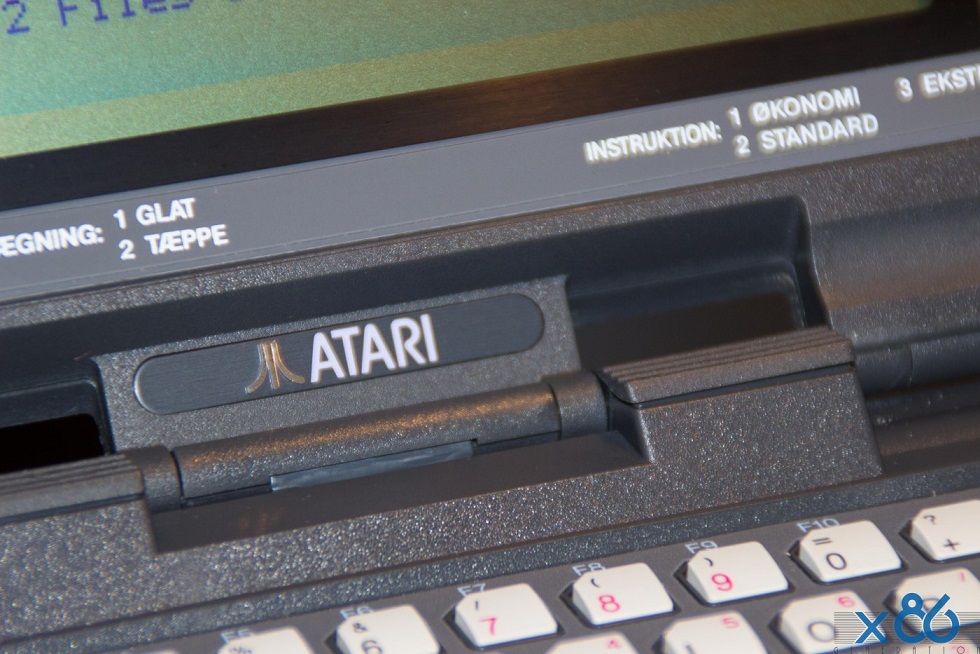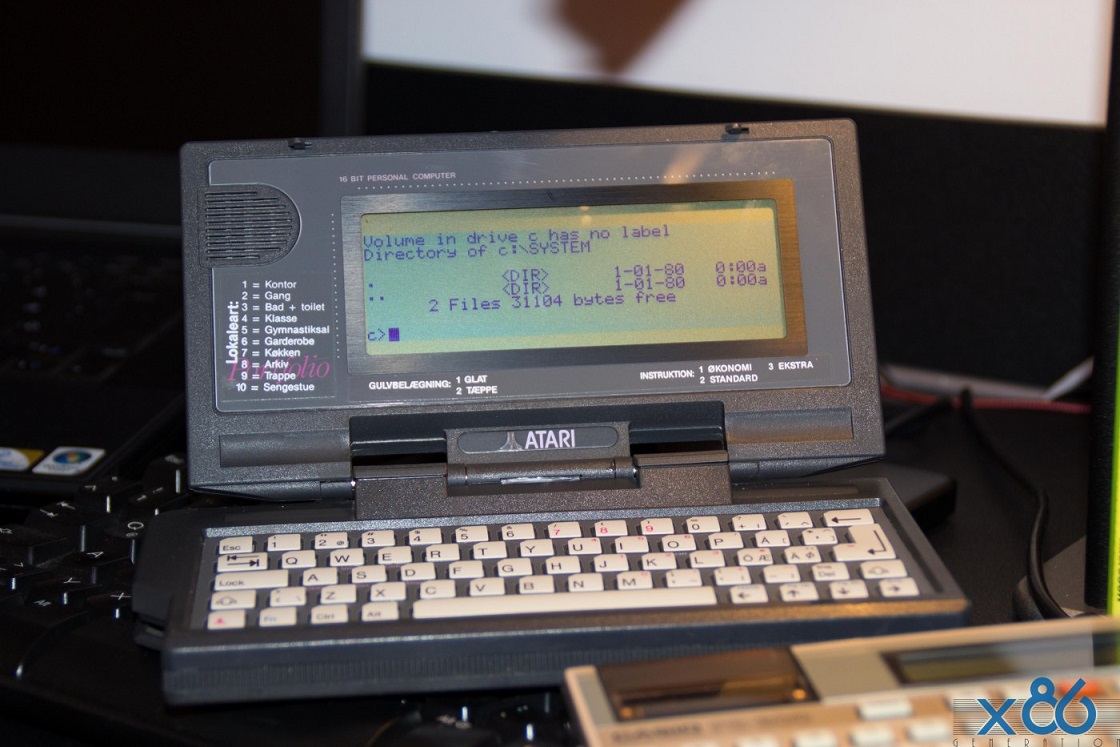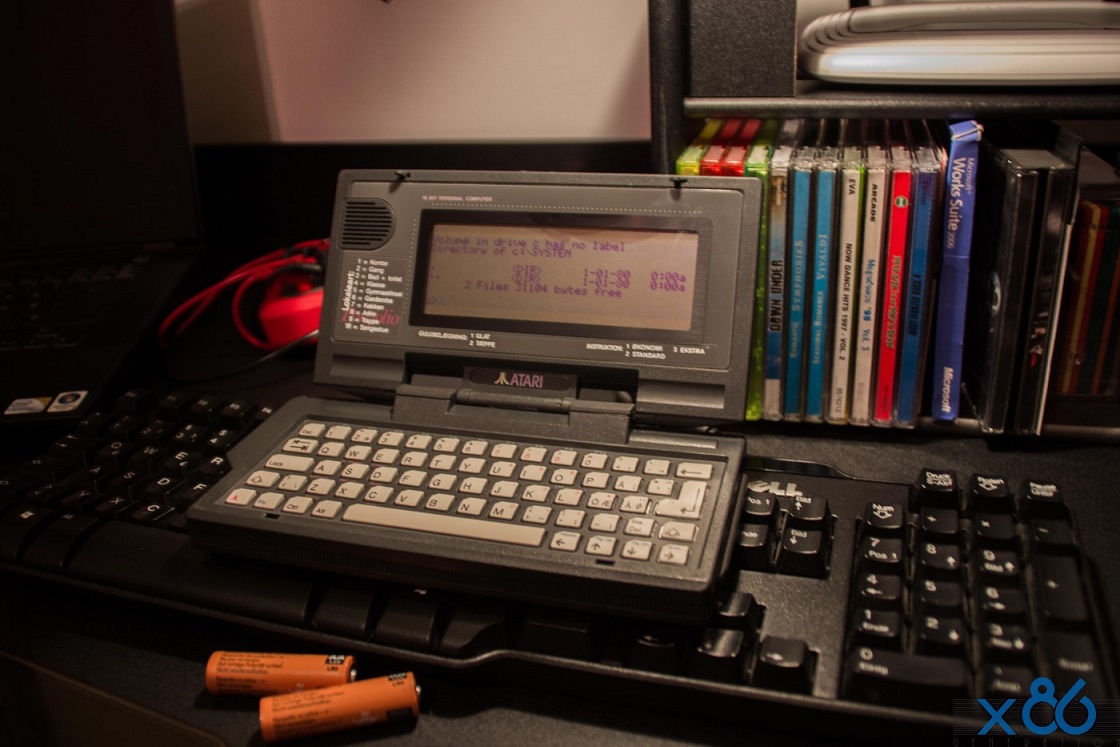Year: 1989
Price: $399, $837 in 2020
The Atari Portfolio (Atari PC Folio) is an IBM PC-compatible palmtop PC, released by Atari Corporation in June 1989. This makes it the world’s first palmtop computer.
The ATARI Portfolio was also used in the Terminator 2 movie when John Connor is hacking the ATM.
Atari’s compact clam-shell ran an MS-DOS compatible operating system – DIP-DOS, from Guildford-based Distributed Information Processing (DIP) Systems – on a 4.92MHz Intel 80C88 processor. The Portfolio has 128KB of memory on board, 32KB of which was reserved for data storage, exposed as the C: drive and backed up by the three AA batteries the Portfolio ran from. A built-in long-life cell protected the memory when the batteries needed changing.
The Portfolio’s display was a 40-character by eight-line job with a 240 x 64-pixel graphics mode, mounted next to the unit’s speaker and above the calculator-style QWERTY keypad. A slot on the side took a range of device-specific memory cards running from 32KB to 128KB.
Anticipating Palm’s own Pilot – which shipped in April 1996, seven years after Atari first showed its palmtop – the Portfolio had diary and address book applications, along with a basic word processor and a spreadsheet package. The apps and the OS resided in 256KB of ROM. Plenty of space, you might think, for programming tools, but the Portfolio had none, not even a Basic language interpreter. To be fair, this wasn’t a machine aimed at coders but at the growing number of folk who wanted a computer for information storage and retrieval, a feature Palm was later to major on with the Pilot. In any case, programming tools were later offered as add-ons.
| Processor | |
| 80C88, 4.9152 MHz Clock Speed | |
| Memory 128KB internal RAM | |
| Includes internal configurable RAM disk (C:) | |
| 256KB ROM contains applications software | |
| Dimensions | |
| Length 200 mm | |
| Width 100 mm | |
| Depth 28 mm | |
| Weighs less than 1lb (454g) excluding batteries | |
| Display | |
| High contrast Liquid Crystal Display (LCD) | |
| 240 x 64 graphics screen or 40 characters X 8 lines | |
| Monochrome (MDA) emulation | |
| Keyboard | |
| Keyboard 63 keys, QWERTY layout | |
| Hot-key access to built-in applications | |
| Input/Output | |
| Memory card slot with optional PCMCIA adaptor | |
| 60-pin expansion BUS for optional peripherals | |
| Built-in speaker with tone dialling (DTMF) | |
| Power | |
| 3 x AA size removable alkaline batteries | |
| Memory preserved during battery changes | |
| Optional AC mains adaptor | |
| System | |
| DIP DOS 2.11 (MS-DOS & PC BIOS compatible) | |
| Software runs from ROM, leaving RAM free | |
| Text Processor | |
| Comprehensive, easy to use text and memo editor | |
| Wordwrap, line and column count, search 8 replace | |
| Handles printer and word processor control codes | |
| Address And Phone Book | |
| Card index with phone list and detailed records | |
| Automatic tone dialling of telephone numbers | |
| Entries are sorted and can be selected by category | |
| Spreadsheet | |
| Accommodates spreadsheet of 255 rows x 127 cols | |
| Reads and writes Lotus 1-2-3 files (.WKS) | |
| Built-in 1-2-3 functions eg @SUM, @IF, @NPV | |
| Time Manager | |
| Comprehensive calendar and diary to the year 2049 | |
| Wake-up alarms even when the Pocket PC is off | |
| Entries can be repeated each day/week/month/year | |
Like us on Facebook.




